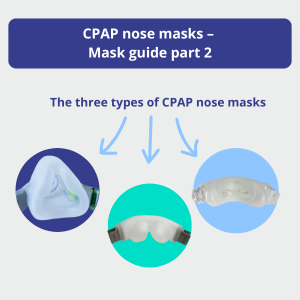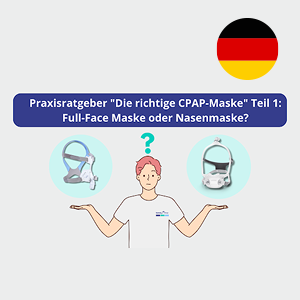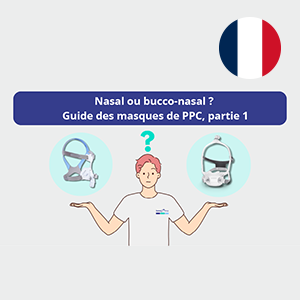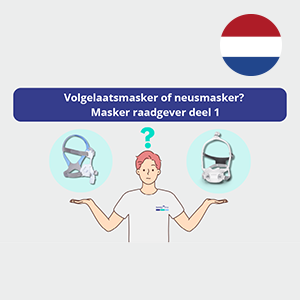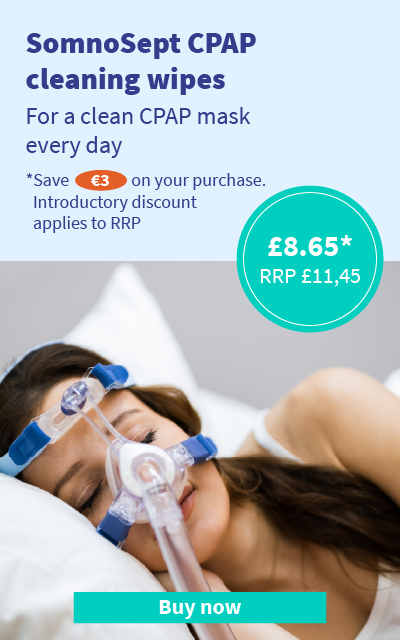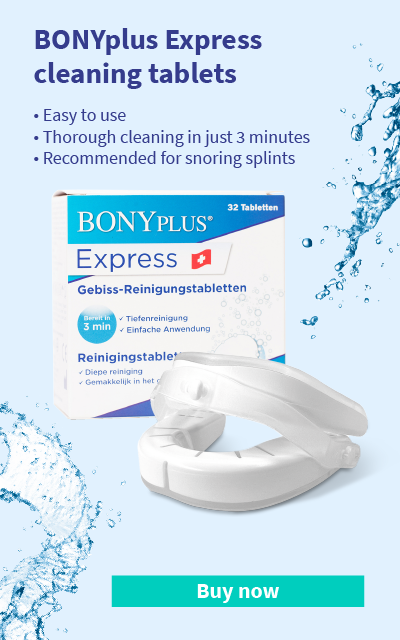“I’m not satisfied with my CPAP mask; which one should I try next?” We get asked this type of question a lot. And it’s understandable, given that there’s such a huge selection of very different mask models on the market for our customers to choose from. But which mask type is the right one? What criteria are actually the most important when choosing a mask?
We’ve been advising customers on exactly this issue for many years, so we know that it’s possible to find the right CPAP mask in just three simple steps. Our series of articles will show you how to do this, and will explain how to easily find the right CPAP mask.
Full-face mask or nasal mask – the crucial question
The first step involves deciding which type of mask you need. There are two main categories, namely nasal masks and full-face masks:
Nasal masks only create a seal in the nasal area. Examples of this type of mask include:
- Classic nasal masks: these masks cover the entire nose (e.g. ResMed AirFit N20) and rest on the tip of the nose or the bridge of the nose.
- Nasal pillow masks: these masks sit directly underneath the nostrils and have small pads that are inserted into the nostrils (e.g. ResMed AirFit P10).
- Minimal contact masks (nasal): these masks sit exclusively underneath the nose (e.g. Philips DreamWear nasal mask) and do not have any pads or plugs.
Full-face masks cover both the mouth and nose (e.g. ResMed AirFit F20). They therefore have a much larger contact surface and are heavier than the nasal masks.
Why nasal masks are the preferred starter masks when beginning CPAP therapy
Nasal masks tend to be used as the standard mask version for people just starting out with CPAP therapy. There are three reasons for this:
- Nasal masks have a lot less contact with the skin, even with classic nasal masks such as the ResMed Mirage FX, and particularly when compared to classic full-face masks such as the AirFit F20. They are also more lightweight.
- Compared to full-face masks, there also tends to be a lower risk of side-effects with nasal masks, particularly in terms of leaks or skin irritation.
- Unlike with full-face masks, there is no risk of claustrophobia, as the mouth remains uncovered.
Finnish CPAP mask study: Nasal masks are used for longer and are more effective
A current, very comprehensive Finnish study* looked at mask use in practice over several years, and provides three very interesting insights:
Firstly, the vast majority of patients in the study (around 87%) used nasal or nasal pillow masks, with only approximately 12% using full-face masks.
Usage share of this mask type (in %)
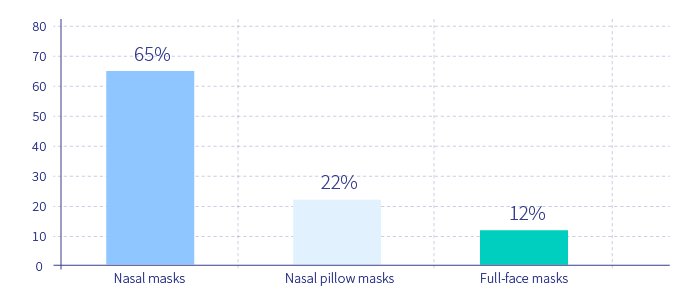
Secondly, the usage duration of nasal and nasal pillow masks during the evaluation period of the study was considerably longer than that of full-face masks, both in terms of the number of usage days and the daily usage duration:
Usage duration in days (over the evaluation period)
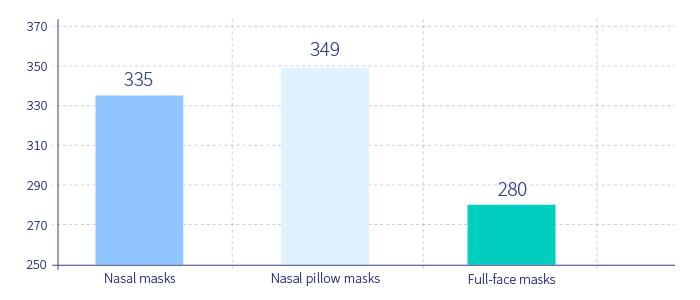
Daily usage duration (in hours)

These considerable differences in the usage duration are a strong indication that nasal masks and nasal pillow masks are significantly better tolerated than full-face masks. This means that patients stick with CPAP therapy for a much longer period.
Thirdly, the therapy effectiveness with nasal pillow masks and nasal masks was better than that of full-face masks. This was measured in terms of how many relevant breathing stops continue to occur when using the particular mask type for CPAP therapy:
Remaining breathing stops (when using CPAP therapy)

It is worth noting that we only talk of minor sleep apnoea if a person experiences over five breathing stops per hour. This means that full-face masks reduced breathing stops to the extent that sleep apnoea usually no longer exists.
In which cases is a full-face mask the better option?
Based on our practical experience, full-face masks are most suitable for use in three cases:
- The patient often breathes through an open mouth at night. This causes the positive pressure of the CPAP device to escape via the mouth. A full-face mask is frequently used in practice in these cases. There is, however, an alternative option here: using a vestibular plate (such as the oxyhero CPAP pro mouthguard). This blocks the mouth breathing and enables mouth-breathers to use a nasal or nasal pillow mask.
- The patient often has a stuffy nose (e.g. due to allergies or a persistent cold).
- The patient requires a high therapy pressure. Full-face masks often distribute the pressure a lot more evenly than nasal or nasal pillow masks.
Once the first decision has been made, i.e. choosing between a nasal mask or a full-face mask, it’s then time for the second decision. This involves selecting the most suitable sub-category. With nasal masks, the options are classic nasal masks, nasal pillow masks or minimal contact masks, and with full-face masks, the options are classic full-face masks or reduced full-face masks.
You can find out more about this in the second part of our series of articles.
* Atte Laaka, Maria Hollmén, Adel Bachour; Evaluation of CPAP mask performance during 3 years of mask usage: time for reconsideration of renewal policies? BMJ Open Respir Res. 2021 Nov 19;8(1):e001104. doi: 10.1136/bmjresp-2021-001104
Nasal CPAP Masks Explained – CPAP Mask Guide – Part 2
Your complete guide to choosing the perfect nasal mask – discover the 5 key features that make all the difference in your therapy success.
Buy CPAP full-face masks at favourable prices
A large selection of CPAP full face masks from the leading manufacturers – for successful CPAP therapy!
Buy CPAP nasal masks at favourable prices
All major CPAP mask manufacturers – find the perfect CPAP nasal mask for your sleep apnoea therapy here.
Dr. Daniel Grätz is the Managing Director of health.On Ventures GmbH, one of Germany’s leading online providers of snoring mouth guards, and has been providing customers with advice about these devices for many years.



